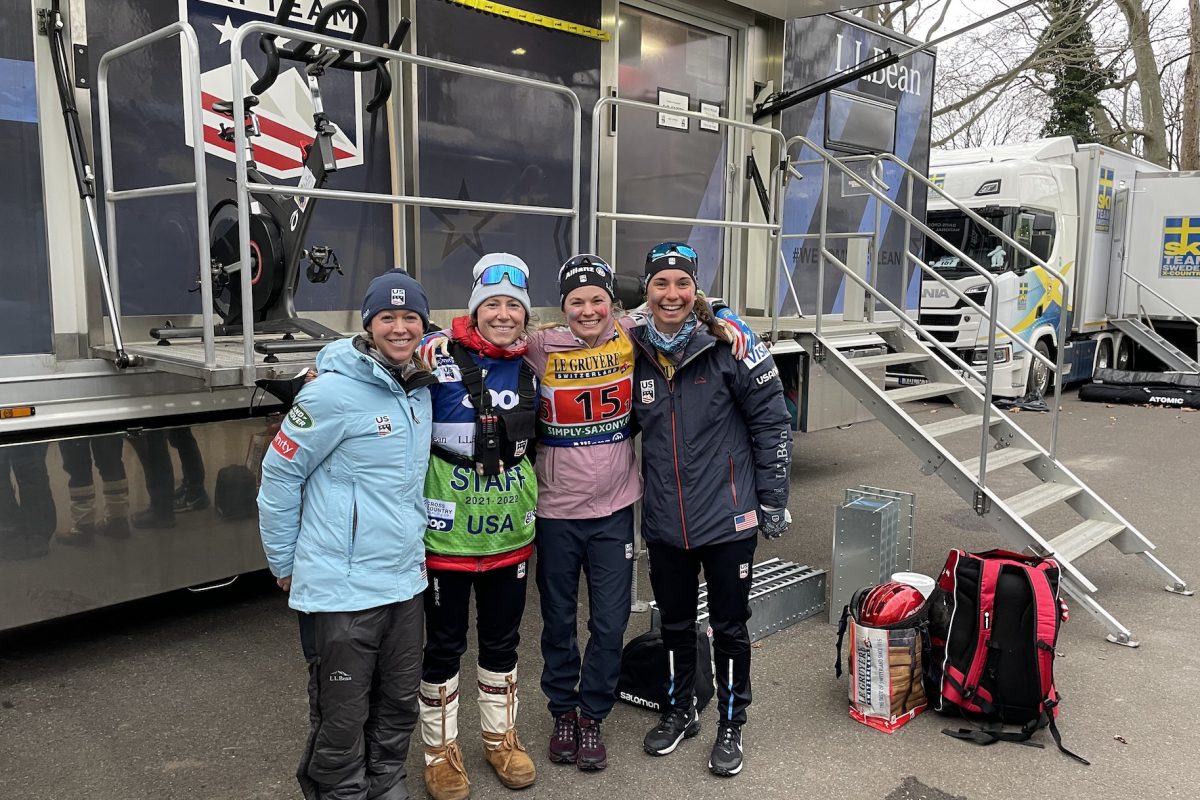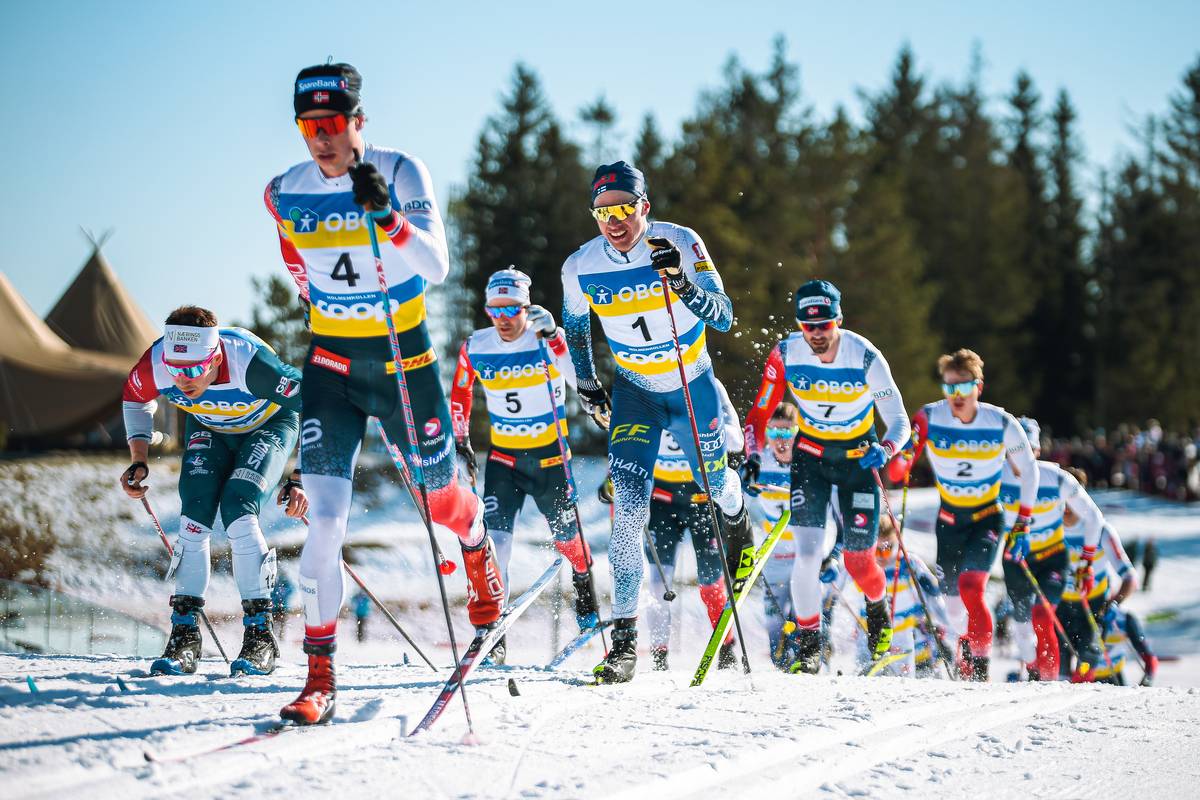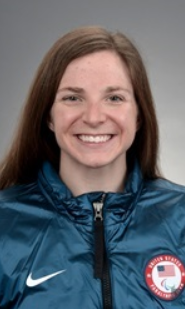
27-year-old Kendall Gretsch is a well-decorated athlete. A glance at the Illinois native’s bio shows three consecutive ITU Paratriathlon World Championship titles (2014 – 2016) plus a silver medal at this year’s event on September 1st in Lausanne, Switzerland. She is a five-time USA Paratriathlon national champion, four-time gold medalist at the PATCO/CAMTRI American Championships, and has four medals from ITU Paratriathlon World Cup events, two each of gold and silver. And that is just her triathlon trophy case.
After entering the sport in 2016, Gretsch took off in para nordic sports. She eventually earned two gold medals at the 2018 PyeongChang Paralympic Games, one in the 6-kilometer biathlon sitting sprint and one in the 12 k cross-country distance race. At the 2019 World Championships, Gretsch skied away with a gold medal in the individual biathlon race, four silver medals, and one bronze.
It is uncommon to compete at an elite level in multiple sports. As such, FasterSkier caught up with Gretsch, who was about to head to the first para nordic camp of the year in Sweden, to learn more about how she trains at an elite level for both sports and shifts her focus between the two throughout calendar years and Olympic cycles.
At the outset of the 2019 nordic season, Gretsch made made the move from her former home base in Madison, WI to the Olympic Training Center (OTC) in Colorado Springs. She had been working full-time as an engineer for a software company. Although remaining with the same company, she has cut back her hours and works remotely. Gretsch explained that this has been a positive change for her athletic development.
“Moving out here to the training center has been super beneficial for me. The biggest part is having my team and coach here,” said Gretsch. “We practice everyday with our team in person, which before, at least for triathlon, I had been doing a lot of remote coaching. When I started with nordic, we did a lot of coaching in person and I realized the benefits of training in person with your coach and also training with teammates.”
She added that living at the OTC allows her greater access to resources that support both her sports, like a training room where she can bike and run, a cafeteria, a gym for strength training, massage, and physical therapy. Removing the commute to these resources has also benefited her overall life-balance.
“It makes it really easy to be an athlete and still have time to work or do something outside of athletics.”
The effect of this transition is evident. In 2019, Gretsch won two of the five races she entered, took second in an additional two, and placed fifth at the Tokyo ITU Paratriathlon World Cup in August. Her silver medal at the World Championships was the icing on the cake.
“Everything came together that day. It was the best performance I could have hoped for and obviously, if you come in second or even if you come in first, you’re always thinking of ways you could get faster. But I was happy with that race and it was a good way to end the season.”
Gretsch was born with spina bifida which occurs from a malformation of the spine and spinal column in utero. As a result, her leg muscles did not fully develop but she is able to walk with the use of crutches and leg braces.
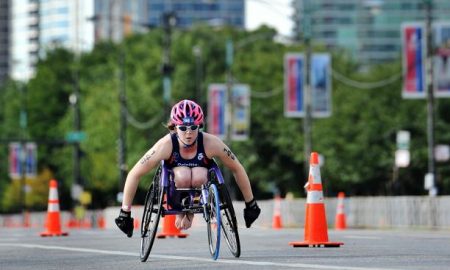
Gretsch competes in the paratriathlon wheelchair division (PTWC) which is equivalent to standard triathlon except athletes use a handcycle for the bike and a racing wheelchair for the run. The only difference in the swim for PTWC athletes is that they do not need to abide by temperature regulation cutoff for wetsuits; they can wear wetsuit bottoms regardless of temperature to improve the flotation of their lower limbs.
She explained that there are two subclasses of PTWC: H1 athletes have less core function and begin the race with a handicap of approximately four minutes, and H2’s like Gretsch have to make up the time difference during the race as the first athlete to cross the finish line wins. Gretsch explained that Rio was the first Paralympic Games where triathlon was contested, but not all classifications were selected. Unfortunately, hers fell into the unselected category. This loss of opportunity, however, led her to nordic skiing.
“At that time, the high performance director for triathlon and the high performance director for nordic were in contact and our triathlon director said, ‘Hey, we have these athletes who are endurance athletes and they don’t have a medal anymore in Rio. They might be good candidates to try transferring over to nordic.’”
The para nordic high performance director reached out and connected Gretsch with a development coach who was based nearby in Minneapolis and with the CXC program in Wisconsin that worked with adaptive athletes.
“From there I tried it out as an avenue of, ‘I can’t go to the Games in triathlon anymore, but maybe I can try this other sport.’ I fell in love with both of them and have stuck with both.”
[You can learn more about Gretsch’s transition to nordic sports here.]
Gretsch explained that her training is dichotomous; in the winter, she focuses almost exclusively on cross country and biathlon, though she tries to get into a pool twice a week when she has access.
“Mainly because the previous winter I did nothing swim, bike, or run, and I found that getting back into the pool was the hardest for me. So I tried to keep at least some contact with the pool and swimming and I think that worked out pretty well.”
Similarly, during the summer, she primarily trains for swim, bike, and run, though she sometimes heads into the shooting range when she has time. Gretsch explained that this oscillation in focus has not been detrimental to her performance in either sport.
“Even if I wasn’t doing a summer sport, I think my summer training would probably look pretty similar [to triathlon training]. Even the members of our team that aren’t doing a summer sport, their summer training is usually hand cycling or some other form that is not just nordic skiing.”
She added that most other para nordic athletes are training in a similar manner for dry land.
“From the mental aspect, you don’t feel like you are getting far behind because a lot of the competition even internationally are just doing other training outside of nordic.”
As the winter or summer Olympics approaches, the length of her triathlon and nordic seasons fluctuate to prioritize whichever sport is closer to the Games. The PTWC classification was chosen for the Tokyo Olympics in 2020, so Gretsch is currently prioritizing triathlon.
“This coming season, triathlon really is the focus, so if there is a triathlon race that I need to go to to help qualify, I’ll make sure I’m there.”
Like most triathletes, Gretsch logs a multitude of hours swimming, biking, and running during her summer season. She explained that most weeks, she is in the pool Monday to Friday first thing in the morning. After the swim, she has breakfast at the OTC then heads to her room to work. In the afternoon, she heads to either a team workout — biking or running — or strength trains in the gym. Some days she does both.
“Typically in the summer we have 2 to 3 workouts a day and in between, it’s eating meals, trying to get some work in. At the end of the day, I’ll try to go to sports medicine to get either massage or meet with a physical therapist or something.”
On weekends, the team does a longer workout, usually a longer ride or a brick workout to practice the bike to run transition. Most weeks Gretsch trains every day with one of those days being an active recovery day.
In the winter, the hours are fewer.
“Everything is a little bit more condensed because the daylight hours are so much shorter.”
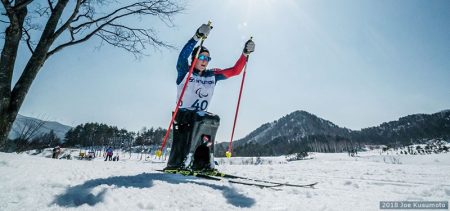
She explained that the team trains from roughly 9 in the morning until lunch time during the week. On snow training requires a drive from Colorado Springs, so this start time allows the team to eat and travel to the training venue.
“It’s a little bit more relaxed in the morning — waking up, getting ready, having breakfast, and then skiing.”
After the session, Gretsch has lunch, followed by a session at either the gym or the shooting range.
Though she is an adaptive athlete, Gretsch explained that her lifestyle outside of training is not different from that of an able-bodied athlete. She explained that she does her best to restrain herself outside of her training to ensure her body is recovered and ready for the next session.
“All my sports activities are just with arms and core and when I’m walking around, it’s a heavier strain on my arms than my legs. So I think you have to be conscious about that. I’d say most athletes are thinking about those same things — just being conscious about how much time I’m going to be out and about doing things that aren’t my sport.”
Gretsch continued that focusing on recovery may be more important when similar muscle groups are used between sports and just walking around. She added that she makes sure she has time off her feet and limits unnecessary walking, particularly on days when she has multiple training sessions.
Like other athletes, Gretsch also has to ensure that she is eating properly throughout the day to sustain her activity. She explained that fueling during workouts is particularly important as the muscles in the upper body fatigue faster than the larger groups in legs.
“From a nutrition aspect, your arm muscles are obviously smaller than your leg muscles would be. I take in a lot more carbs during a session than you might think and that’s just to keep my glycogen levels up. You have a smaller source in your arm muscles than someone would in their legs.
“So keeping [my nutrition] up and preserving myself especially on a day when I have two sessions where, sure I might be able to make it through one session, but really trying to keep my nutrition up and be smart about that so the second session is still a quality session.”
Overall, her areas of focus as an athlete are universal. She expressed that the only aspect that may be specific to para nordic sport might be an increased focus on exercises that support injury prevention.
“There are definitely things that we do from a strength perspective to make sure that we’re maintaining the little stabilizer muscles [in your arms and shoulders]. So before we do a strength session or a hard ski session, making sure we do a good warm up. Just making sure those tiny little muscles that help prevent injury are strong too, not just the big muscles.”
To conclude, Gretsch left other athletes who compete during multiple seasons throughout the year with the advice to truly embrace the time off between seasons to recharge.
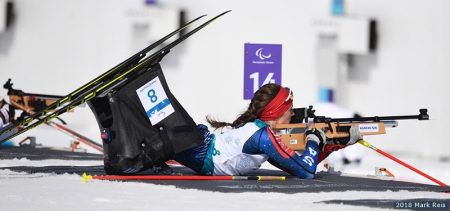
“I think as an athlete you’re so used to training six to seven days a week, you’re just constantly busy. Now I’m in the off season and one of the things that my coaches try to emphasize is that we really have to take advantage of this time between seasons, especially because I’ll have two times within a year that I’m peaking instead of just one.
“So to maintain your mental and physical durability throughout the season, really taking advantage of the off season and having unstructured time to relax and mentally take a step away from everything. I think that is important for anyone in their off season, but I think it becomes more important when you have these two seasons throughout the year instead of just one.”
Rachel Perkins
Rachel is an endurance sport enthusiast based in the Roaring Fork Valley of Colorado. You can find her cruising around on skinny skis, running in the mountains with her pup, or chasing her toddler (born Oct. 2018). Instagram: @bachrunner4646

